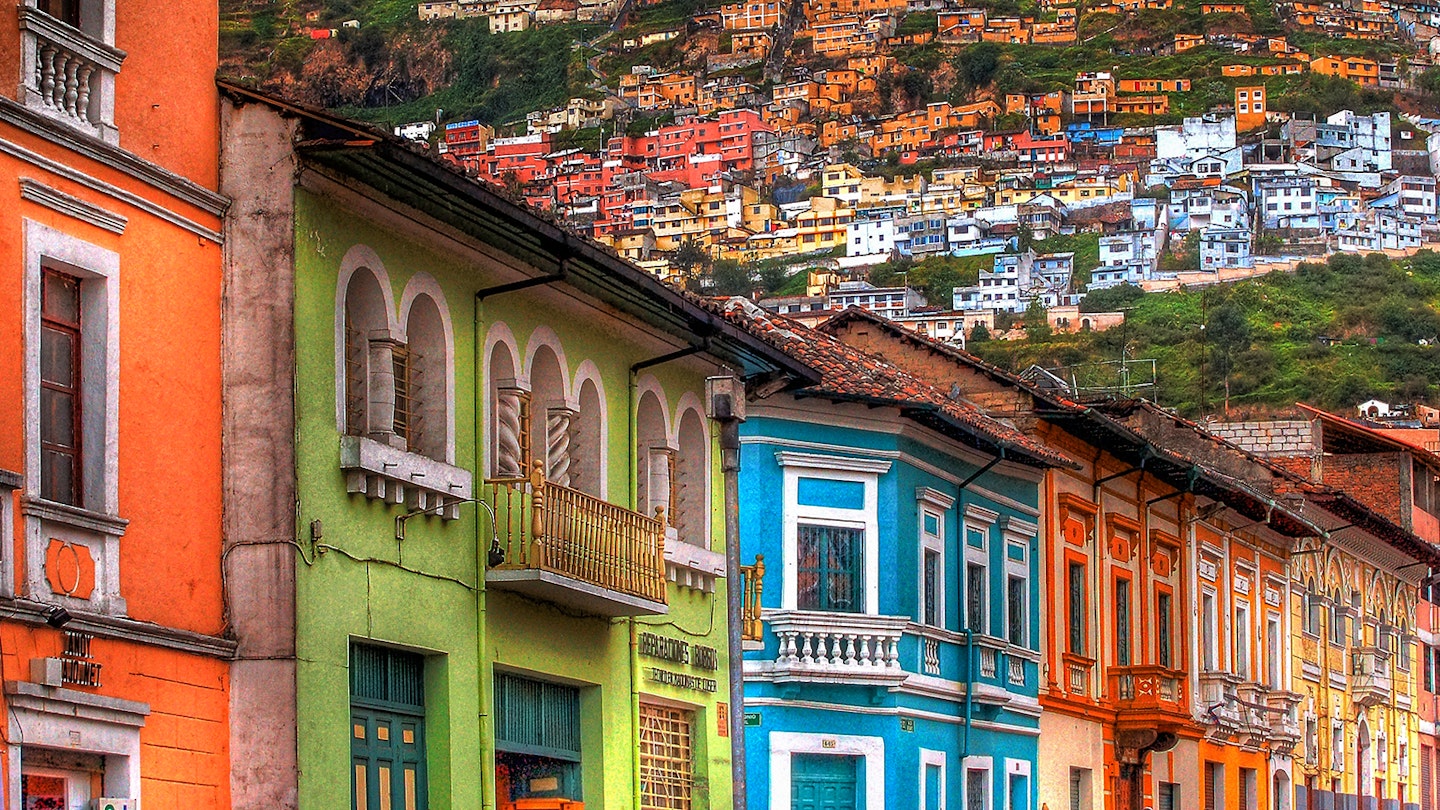Leave it to Quito to quietly slide into its new position as South America’s capital of cool. This Ecuadorian city has long nabbed some impressive titles, including the first city to be named a World Heritage Site by UNESCO in 1978. However, it has only recently emerged as a destination brimming with contemporary arts and culture.
Today, Quito represents more than just a history-steeped stopover city for travelers heading to the Galápagos Islands or the Amazon rainforest; it is home to one of South America’s most vibrant creative scenes. Here, pizza places double as venues for indie concerts and politically charged poetry readings, while bohemian neighborhoods showcase murals, art studios, and food truck festivals. If the critically acclaimed exhibitions at Centro de Arte Contemporáneo (Ecuador’s only contemporary art museum) indicate anything, the appetite for new talent is stronger than ever. After visiting the colonial cathedrals of the centro histórico (Quito’s Old Town) and catching your breath at 9350 feet above sea level, make some room for the city’s eclectic offerings.
Dive into the arts
To reach the urban epicenter of Quito’s art scene, head to the La Floresta neighborhood, where a thriving community of filmmakers, artists, and writers has emerged. Low-cost rent initially attracted creatives to the barrio in the 1990s, leading to a communal push for better public policies to support independent galleries, film productions, and collaborative spaces. Fast forward over 20 years, and you’ll find the area peppered with the fruits of their labor, including No Lugar, a contemporary arts venue and workshop space. The floral painted Ocho y Medio, an independent cinema with a photogenic café, cannot be missed. The vibrant story continues on the streets, where murals by local talents like La Suerte and Apitatán shine, becoming the main attraction of free walking tours through the neighborhood.
Embark on a brewery hop
In Quito, streams of cultural empowerment have flowed into the craft beer scene, with over 20 microbreweries established over the last decade. Recognized as the first place in South America to brew beer (thanks to a Flemish monk who introduced barley and wheat in 1535), Quito has recently revived cerveza artesanales traditions. One standout is Zambo Creek Microcervecería, a pioneering all-female brewery founded by sisters Laura and Paulina Boada. They’re changing Ecuador’s male-dominated beer industry and supporting local agriculture by incorporating Amazonian tea leaves, coffee, and cacao into their brews. Other innovative gastro pubs, like Bandidos Brewing, invite guests to blend history and hops, located in a charming Spanish colonial building. For a complete experience, consider joining a craft beer tour to meet brew masters and taste local favorites, including spots like Altar Cervecería.
Find local tunes
Stroll down the charming cobblestone street of La Ronda on a Friday night, and you will likely hear Ecuadorian folk music spilling out from cozy bars. Salsa dancing and canelazo (a hot drink made from citrus fruits, cinnamon, and cane sugar liquor) set the festive tone, but it is Quito’s passion for music that keeps the celebration alive. Beyond traditional melodies, the city is home to an exciting music scene featuring genres from ska-jazz to Andean hip-hop. Thanks to the success of Quito-based bands like Swing Original Monks and Da Pawn, the local music has transcended Ecuadorian borders. According to Pedro Ortiz, drummer and manager of Da Pawn, “The music scene in Quito is vibrant and diverse. Local artists perform traditional music in the streets, while venues nearby host heavy metal bands. The do-it-yourself culture is deeply rooted here.”
With year-round festivals, it’s nearly impossible to walk through Quito’s plazas and parks without encountering buskers. The highlight of the summer is the Verano de las Artes (Summer of Arts) festival, held over three weekends in August at the scenic Parque Itchimbia. This free event features over 175 Ecuadorian and Latin American artists alongside local vendors and food trucks.
Taste Quito’s best bites
Street food is an institution in Quito, with vendors offering everything from steaming soups to tortillas de tiesto (corn pancakes). Unsurprisingly, the city’s innovative culinary entrepreneurs continue these street-level traditions. With popular food truck ‘plazas’ appearing all over the city, a visit to Bunker Food Park on Avenida Gribaldo Miño (open evenings Monday–Friday, and afternoons on Saturday and Sunday) offers a diverse taste of local dishes. In La Floresta, the street-food park La Platea is located at Avenida La Corona and Francisco Salazar (open noon–10pm Tuesday and Wednesday, noon–11pm Thursday, noon–midnight Friday and Saturday, and noon–5pm Sunday).
A trip to Quito would be incomplete without sampling award-winning chocolate from Kallari or enjoying Ecuadorian coffee at one of the city’s many cafes. For a warm reprieve from the Andean chill, visit Botánica, a café-boutique selling items made from recycled materials. By staying for a while, you’ll gain a new appreciation for Quito, a city evolving from its historic roots into a creative hub, where originality thrives.





